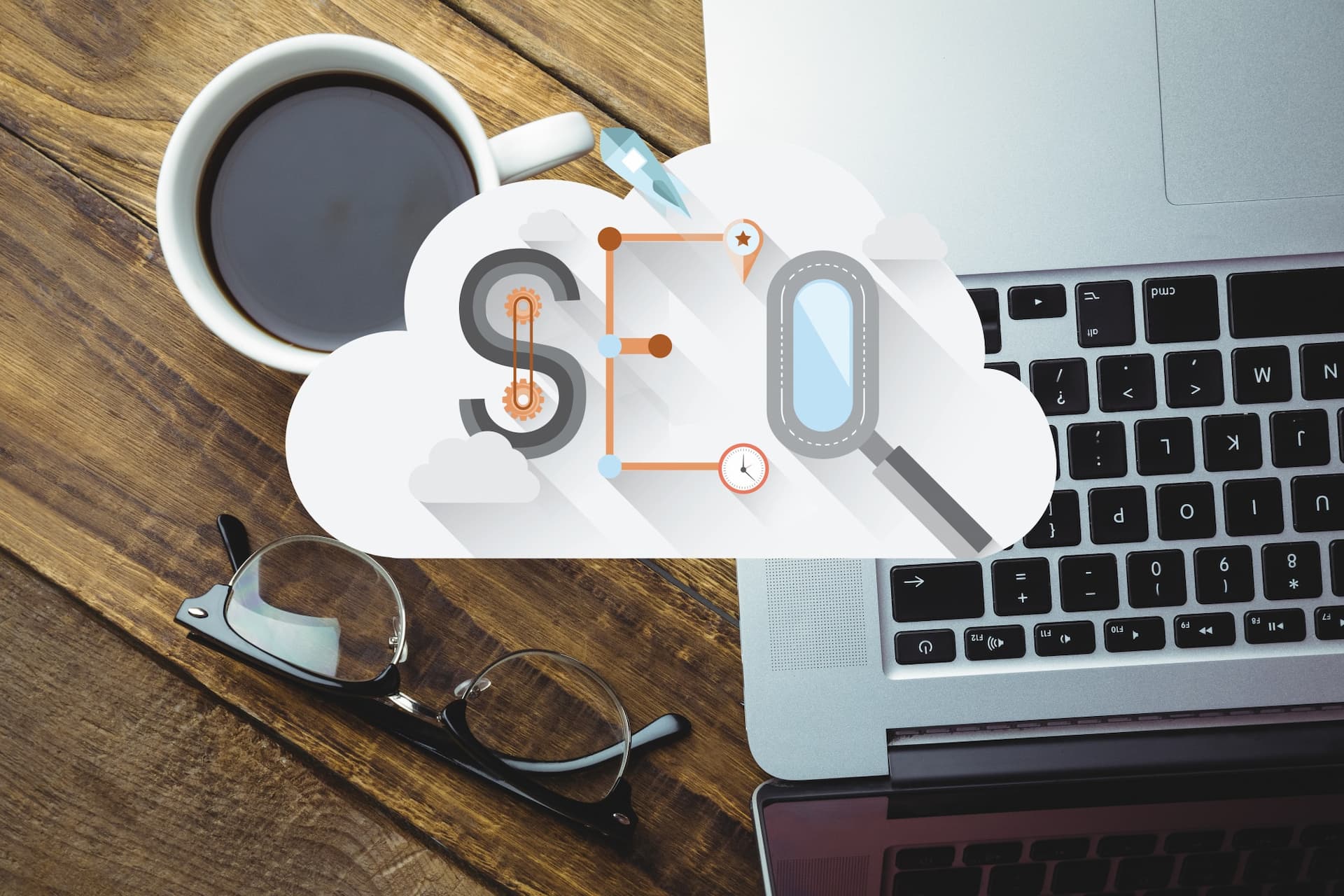Did you know that over 5 billion Google searches are performed every day worldwide? So let’s distinguish SEO from SEM: Google SERP consists of paid and organic search results.
Search Engine Optimization (SEO) provides organic traffic, while Search Engine Marketing (SEM) includes traffic with various paid search ads.
In this article, we will compare SEO vs SEM and see how they can work together.

What’s SEO?
The main goal of search engine optimisation (SEO) is to appear high in Google’s search results. For example, if someone types “glazed doughnuts” into the Google search box, they’re probably looking for a doughnut shop, ingredients or a recipe.
So, if you’re a restaurant or a food blogger, you should ensure that your website or content is optimised for the user’s search intent. With such a strategy, you can rank organically ahead of other websites without paying for ads.
What Are the Types of SEO Methods Offered?
First, it’s crucial to understand how search engines work so you can better rank your content. This strategy can lay the foundation for a suitable long-term SEO plan.
Since the introduction of search engines like Google, their search algorithms have undergone numerous updates and innovations. SEO companies mainly offer specialised SEO services that help businesses succeed in specific and highly competitive industries.
The most common SEO marketing services include:
- E-commerce SEO
- Local SEO
- Voice SEO
- SEO audits
Traditional SEO services that cover the most rudimentary SEO needs should suffice for most companies. Others, however, will need more specialised SEO services. For example, if you’re a local or e-commerce business, local and e-commerce SEO services are beneficial.
In some cases, SEO services will focus on specific areas, like:
- On-page SEO – is about optimisations related to your web pages, e.g., content and title tags.
- Off-page SEO – focuses on optimisations related to your online presence, e.g., backlinks.
- Technical SEO – includes optimisations related to the backend of your website, e.g., page speed and website architecture.
Since successful SEO strategies require on-page, off-page as well as technical SEO, it is uncommon for companies to invest in these services in isolation. Most opt for full-service SEO plans that include on-page, off-page and technical SEO because these plans give you an all-in-one solution.
On-Page, Off-Page, & Technical SEO
Creating content for on-page SEO can improve your ranking. To do this, you need to incorporate keywords into your on-page content, create high-quality content and update it regularly, and ensure that your metadata, data that explain the primary data, is effectively written and contains relevant keywords.
Off-page SEO targets the external components of your website, such as building backlinks. Establishing relationships and creating content that can be shared by others contributes to off-page SEO. Even though this takes a lot of work, your SEO success depends on it.
As the name implies, technical SEO improves aspects of a website that have nothing to do with content. Some examples are your website’s structured data, crawlability, speed and mobile-friendliness.

What’s SEM?
In layman’s terms, SEM refers to various models of paid search advertising. When using paid search strategies like PPC (pay-per-click) to achieve better visibility in SERPs, the budget used to pay for the ad should be allocated to a user’s search query.
So what is PPC? You, as an advertiser, pay a fee when someone clicks on your ad. You can generate leads, increase sales, and raise brand awareness through paid PPC searches.
This can lead to search results that appear as Google ads and are often placed on the first pages of a search query. Usually, it depends on how you use and set your keywords, which is why it’s much more vital to have a concrete strategy and plan.
Different Types of SEM
SEM ads are available in various formats, including:
- Text-based ads
- Visual ads, such as shopping ads
The main benefit of SEM is that you can present your offers to potential customers looking for you to fulfil specific needs.
What Does SEM Include?
SEM covers all paid search advertising, including:
- PPC (pay-per-click) and CPC (cost-per-click)
- Retargeting
- Mobile search advertising
- Geotargeting
- Enhanced campaigns
- Bing Ads
- Google Ads
- Product Listing Ads (PLAs) for e-commerce and Google Shopping
- Amazon Ads
- Youtube (Video search ads)
SEM is paid advertising in the PPC’s sponsored listings of a search engine. And PPC means that the advertiser has to pay when a user clicks on the ad, as opposed to Cost per Impression (CPM), where advertisers pay per 1,000 impressions.
Currently, Google Ads is the most significant provider of search engine advertising in the market. In 2022, revenue from the search engine advertising market in China was $53 billion; after Japan, Australia is third in APAC with $5.1 billion. These revenues don’t include those generated by SEO.
How Do SEO & SEM Complete Each Other?
Even though it sounds like they work similarly, they are two different approaches to getting more visible in SERPs.
Improving your website’s visibility will result in you showing up in SERPs by optimising for keywords that target your niche and audience. You can test and revise both to see which direction you need to take to interact more effectively with your audience.
Both SEO and SEM are about driving relevant traffic to your landing page. The traffic flow that results from both strategies can work organically or through paid plans.
Keyword Research
You should do keyword research to find and target keywords using SEO and SEM. Let’s look at keyword research in action via Ubersuggest to show how helpful it can be for your search engine efforts.
Ubersuggest is a tool that helps you with hundreds of suggestions when you need more keyword ideas. It gives you results on volume, competition and seasonal trends for each keyword. And to simplify things a bit: It’s all about what people type into Google.
If you know enough about your competitors’ strategies and audiences, it should be easy for you to keep up. By effectively combining SEO and SEM, you can take over the SERPs and make sure you’re seen in paid ads and organic rankings.

When Should You Use SEO vs. SEM?
Before you understand when to focus your digital marketing strategies on SEO vs. SEM, you must understand what’s best for your search marketing campaign. If you have a limited budget, SEO is probably better.
When you publish quality content, your keywords must also match the quality, which is crucial for ranking on Google. If you’re serious about ranking well, you should consider link-building strategies. This way, you can use your SEO effectively and achieve a strong page authority.
How Should You Use SEO vs. SEM?
By setting up and testing pages, you can find out which strategy works best, i.e. what works and what does not.
For example, ad copy, keyword combinations, and landing pages will yield different results. Evaluate all the data and change it to get the most out of your ad investment.
SEO and SEM do not work with a “set-it-&-forget-it” technique. For a search engine approach to be successful, it must be regularly reviewed, tested and improved.
SEO vs. SEM, Which’s Better?
You probably want to hear something definitive, but it depends on your goals.
If you want to make a sale in a few weeks, SEO might be too slow to convert your audience in time. In that case, SEM would be a better choice, while SEO is more beneficial for long-term growth.
As for visibility in SERPs, SEM can be better than SEO strategies if your performance is low. In general, SEM and SEO are powerful marketing channels that provide you with a lot of opportunities.
What’s the Difference Between SEO & SEM?
The main difference between SEO vs. SEM is that SEO relies on free, organic search methods and SEM charges for paid advertising. SEM starts working faster because it is a paid technique, while SEO takes more time but is a robust and long-term effort.
SEO is a more time-consuming method that gradually adds value. And an investment in SEM means that if you turn off your ads, your visibility will immediately disappear. For this reason, it is essential to understand the different use cases and gain a competitive advantage by combining their strengths to be successful.
Bottom Line
Now that you’ve learned the basics of SEO vs SEM and the critical differences between them, you can choose one or the other to grow. Over time, the value of your website will determine how well your strategies, SEO vs SEM, work.
Please keep in mind that you can use both to your advantage. SEO is part of your non-paid tactics within your search marketing strategy, and SEM and PPC are the paid roadmap.
At BroadWeb Digital, we know how to use SEO vs SEM to improve your digital presence, and our search engine marketing agency would love to learn more about your business. Contact us today, and let’s help you achieve maximum reach and sales worldwide by optimising your website. We combine the benefits of SEO and SEM based on your specific needs.









